My Car Idles Fine But Sputters When Accelerating: [12 Potential Causes and Solutions]
When your car runs smoothly at idle but hesitates on acceleration, issues may range from ignition parts like faulty spark plugs or coil packs, or sensors (O2, MAF, crank), to fuel system abnormalities like blocked injectors or fuel pumps, to potential vacuum leaks. Blockages due to catalytic converter fragments, dirty throttle body, slipping transmission and bad engine mounts can also cause your car to stutter under acceleration. Diagnostic strategies include checking the OBD system’s fault codes, testing individual components, and utilizing multimeters. Solutions often involve replacing outdated parts, cleaning mass air-flow sensors, and with experimentation on high-octane fuel potentially beneficial.
Having car troubles stinks, right? If your car is idling smoothly but starts sputtering when you step on the gas, it’s super frustrating.
In this quick guide, we’ll walk through some of the most common culprits for the stuttering or jerky car during acceleration and the steps you can take to get your sweet ride accelerating properly again.
With a few simple checks and tweaks, you’ll have your wheels back up to speed in no time. Now let’s dive in and get your engine revving like new!
You can also read my guide on Car shaking at idle but running fine while driving.
For you guys, I’ve developed an interactive tool that assists in car problem diagnosis. It directs you in easy steps. Make sure to check it out.
- Fouled or faulty spark plugs can cause ignition misfires leading to hesitation during acceleration.
- Weakened ignition coils may struggle to keep up under load causing poor combustion.
- Oxygen sensors going bad provide inaccurate fuel mixture data, disrupting performance.
- Clogged fuel injectors reduce fuel delivery causing engine to stumble when accelerating.
- Dirty throttle body or mass airflow sensor throws off air/fuel ratio balance.
- Vacuum leaks let in unmeasured air, resulting in lean mixture and sputtering.
- Slipping transmission struggles to engage gears properly during acceleration.
- Catalytic converter blockage prevents exhaust gases from exiting smoothly.
- Worn engine mounts allow excessive movement effecting fuel delivery.
- Testing components with multimeter helps diagnose root cause.
What is My Personal Experience With the Engine Idles Fine But Cuts Out When Accelerating?
Once, my brother was having trouble with his 2010 Nissan Miata. It would idle fine but start sputtering and hesitating whenever he tried to accelerate. After some initial troubleshooting, we suspected it was a vacuum leak causing the issue.
I had him bring the car over and we did a visual inspection of all the vacuum hoses. Sure enough, we found a small crack in one of the hoses going to the intake manifold. We replaced the damaged vacuum hose with a new one from the auto parts store.
After the quick fix, my brother’s Camry was accelerating smooth as butter again. It just took a bit of hands-on troubleshooting and replacing a $30 vacuum hose to solve the sputtering issue.
What Are the Causes of Smooth Idling But Hesitation When Accelerating?
Here are the causes:
1. Fouled Spark Plugs Causing Misfires
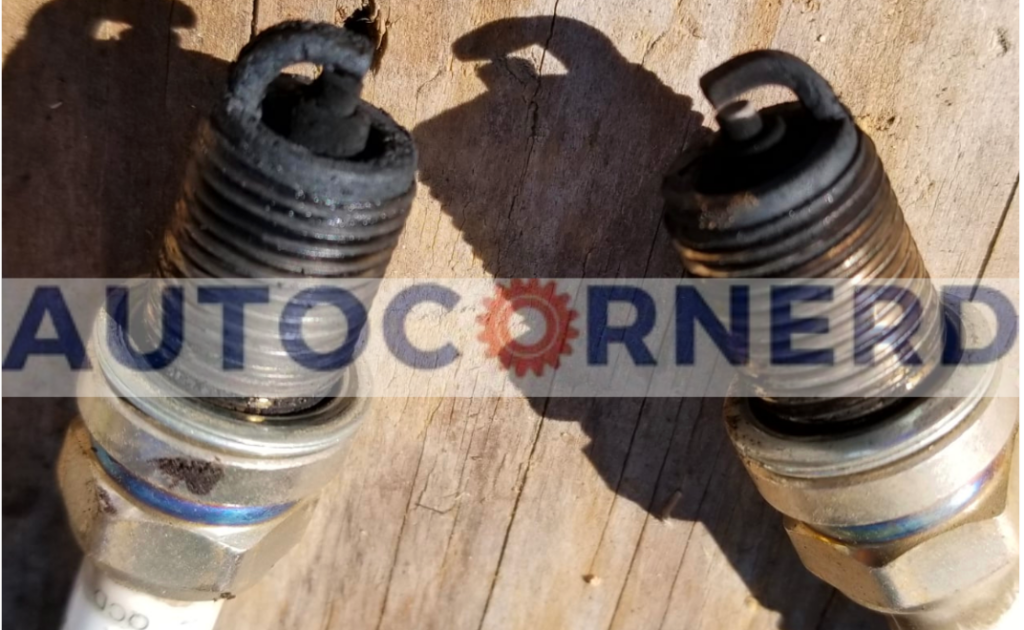
Inside an engine, each cylinder requires a spark to ignite the compressed fuel-air mixture which provides the power stroke. The spark plug provides this ignition source by generating a high voltage spark across its grounded electrode and center tip.
This spark jumps the air gap in between and ignites the mixture. The combustion force pushes the piston down providing power. Clean, properly gapped plugs spark consistently to keep the engine running smoothly.
When a spark plug becomes contaminated with carbon, oil, or fuel deposits, it can fail to properly ignite the air-fuel mixture in the cylinder. This results in a loss of power, stumbling/sputtering during acceleration, and sometimes an engine shake or vibration.
How do spark plugs foul?
There are a few common ways spark plugs become fouled and fail to spark properly:
- Oil Fouling: Oil leaking into the combustion chamber coats the spark plug’s insulator and electrodes with a thick layer of oil. This prevents sparking or weakens the spark. Common causes are worn piston rings, leaking valve seals, excessive oil, overfilling, and short trips.
- Carbon Fouling: Built up carbon and soot deposits on the plug insulator and electrodes. Typically from prolonged low speed driving, weak sparks allowing carbon build up, rich fuel mixtures, and short trips.
- Fuel Fouling: Unburned fuel reaching the plugs causes wet oily deposits. Often due to a rich air-fuel mixture, weak ignition, excessive idling, or faulty injectors. Fouls quickly with raw gasoline washing away oil film on plug.
- Coolant fouling: A coolant can also leak through a blown head gasket and foul your spark plugs. I have explained this in my guide on car not starting after overheating.
How to diagnose?
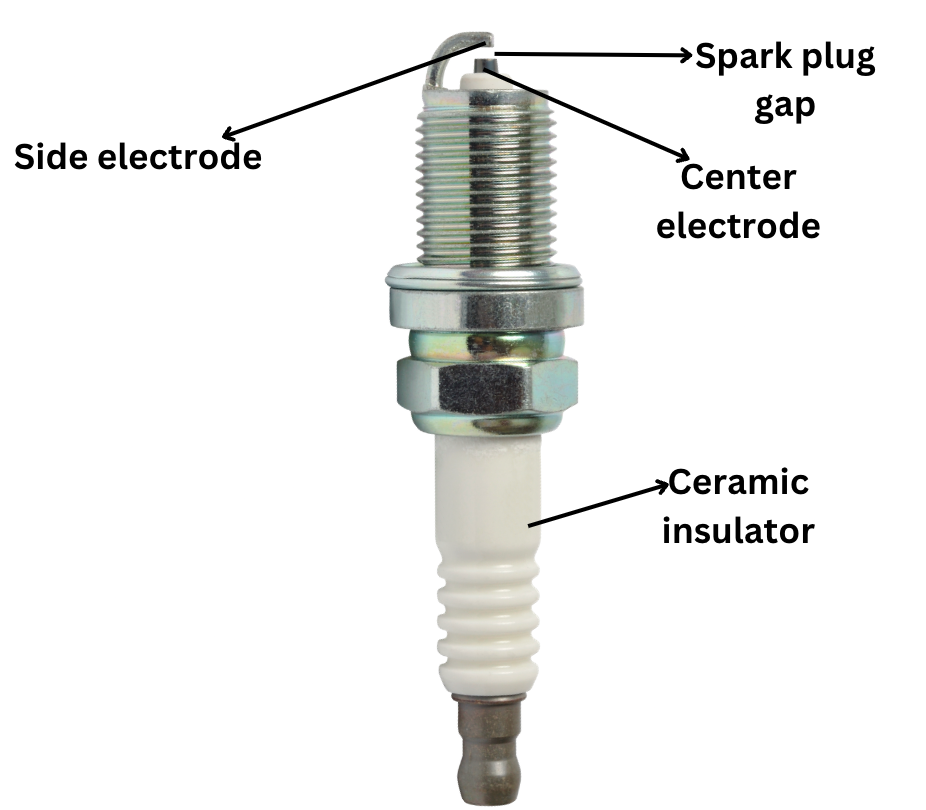
Visual inspection of the spark plugs can indicate bad plugs. Look for wet oily deposits, excessive carbon build up, electrode wear, or light grey ash deposits.
You can test spark plugs by using a multimeter and setting it to resistance measurement. You should get a reading between 4,000 to 8,000 ohms on the center electrode.
In addition, you should look for a short between the ground and center electrode of the spark plug. No short means a good spark plug.
You can watch following youtube video to learn more:
How to fix?
You can try cleaning the spark plugs using the wire brush and spark plug cleaner to carefully remove any carbon deposits or contaminants from the electrode. Ensure not to damage the electrode or insulator in the process.
First, use compressed air to clean off any dirt and debris. Then, keep the spark plug soaked in the brake cleaner till all the gunk on the spark plug is washed away.
2. Bad or Corroded Ignition Coils Resulting In Improper Spark Ignition
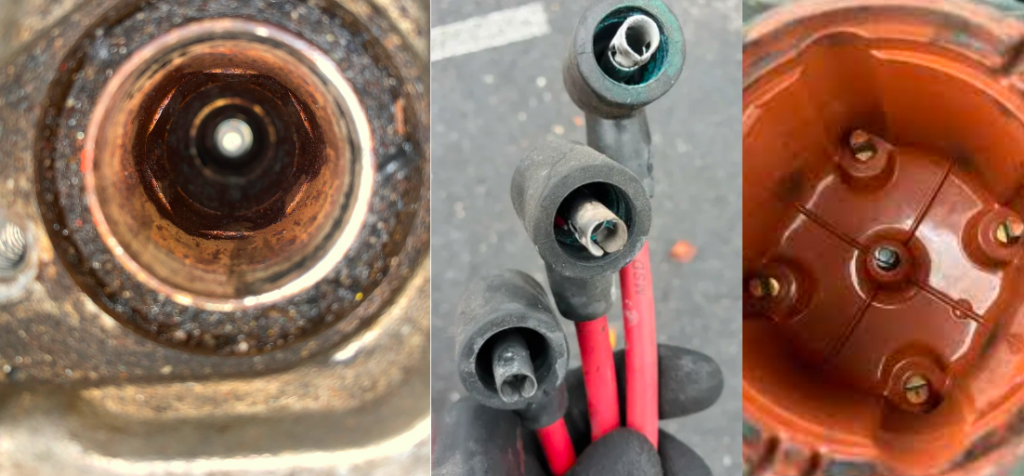
Your car’s ignition system relies on the ignition coil to keep the engine firing on all cylinders. The ignition coil acts as a mini transformer, converting your battery’s 12 volts into the thousands of volts needed to generate powerful sparks to ignite the fuel in each cylinder.
But over years of heat cycles, internal electrical arcing, and normal wear, ignition coils gradually lose strength. When you slam the gas pedal for quick acceleration, the engine’s pistons start pumping furiously, demanding a rapid burst of sparks from the ignition coil. A weak coil can struggle to keep up, unable to churn out enough sparks to light the fuel mix. This can cause sputtering, misfires, and poor performance when you need power the most.
Yet at idle, when the engine barely breaks a sweat, that same tired coil might still spark strongly enough to keep the motor running smoothly.
Configurations of ignition coil
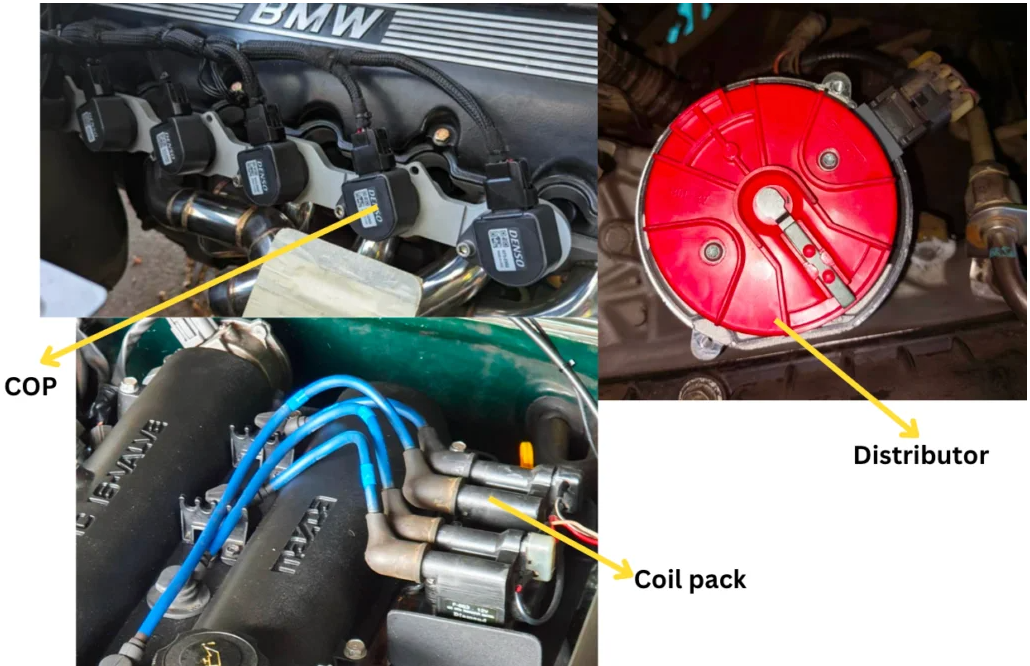
Your vehicle’s ignition system likely uses one of three ignition coil configurations:
- Distributor – A single coil providing spark to multiple cylinders via a distributor.
- Coil Over Plug (COP) – Individual coils mounted directly over each spark plug.
- Coil Pack – One coil pack feeding multiple plugs via spark plug wires.
Pinpointing bad coils throwing misfire codes P0300 through P0306 (the last digit matches the misfiring cylinder) involves a process of elimination:
First, swap the suspected bad coil from its cylinder with a known good coil from another cylinder. If the misfire code switches cylinders, you’ve confirmed the original coil is bad.
Alternatively, remove the questionable coil completely and run the engine to check for stumbling on that cylinder. Stumbling indicates that coil was still functioning properly. No change in performance points to a dead coil.
For ignition coil packs/spark plug wires, you can watch following video:
3. Malfunctioning Oxygen Sensor Measuring Incorrect Oxygen Levels
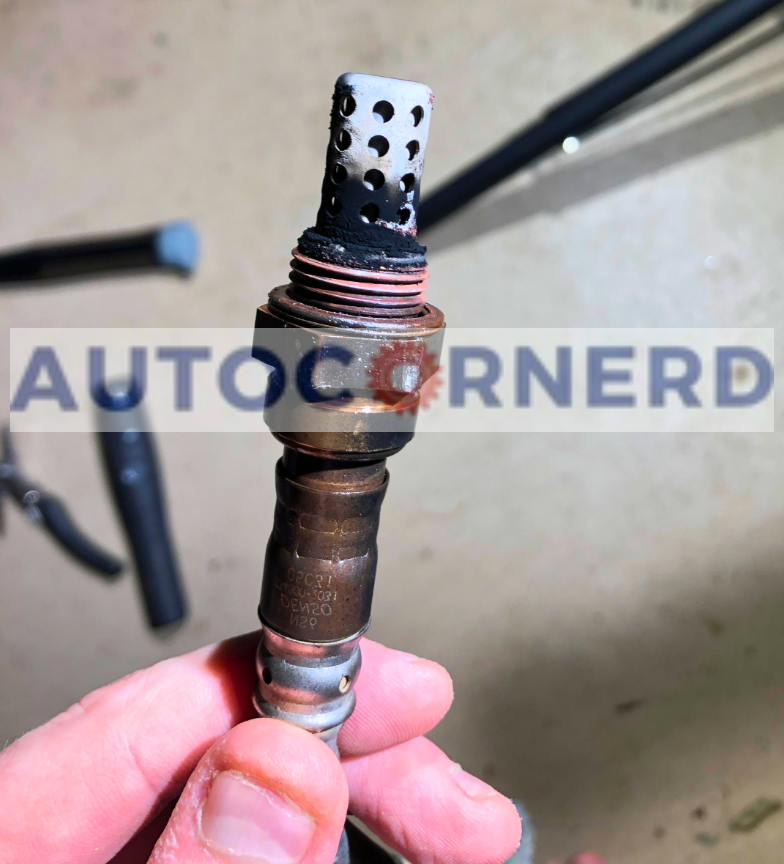
The oxygen sensor is a very important part that keeps your car running smoothly. It is also called the O2 sensor. This little sensor sits in the exhaust pipe and measures how much oxygen is in the exhaust gases coming out of the engine.
The oxygen sensor sends a voltage signal to the car’s computer based on the oxygen levels. The computer uses this data to know if the fuel mixture is correct.
If there is a lot of extra oxygen in the exhaust, it means the mixture is too lean. In this case, the computer tells the engine to add more fuel.
On the other hand, if there is little oxygen in the exhaust, the mixture is too rich. Here, the computer will reduce the fuel going to the engine.
This back and forth between the oxygen sensor and the computer happens continuously. It keeps the air and fuel ratio at the ideal 14.7 to 1. This gives the best engine power, gas mileage, and emission control.
An engine has two oxygen sensors. One is upstream of the catalytic converter and the other is downstream. We are only concerned with the former one.
How do oxygen sensors fail?
Unfortunately, oxygen sensors gradually degrade over time. As mileage accumulates, contamination builds up and components wear out. The sensor slowly loses its ability to accurately measure oxygen levels.
When acceleration demands more fuel, a faulty oxygen sensor struggles to keep up. The compromised readings disrupt the computer’s fuel trim adjustments. This can cause driveability issues like:
- Stumbling and hesitation when you step on the gas. The engine misses its power target due to the improper air-fuel mix.
- Stalling out completely. Major lean or rich spikes from a malfunctioning sensor lead to a stall when accelerating.
How to diagnose?
To diagnose a potentially bad oxygen sensor, perform a voltage test. Watch the volt meter while revving the engine. A good sensor oscillates rapidly between a low and high voltage range, indicating it’s responding properly to air-fuel changes.
Specifically, check that the voltage fluctuates at least once every two seconds between 150mV on the lean side and 850mV on the rich side. Steady readings or abnormal swings likely mean a failed sensor.
When connecting the voltmeter, attach the positive lead to the sensor’s signal wire. If it has two wires, connect the negative lead to the sensor’s ground.
4. Dirty or Malfunctioning MAF Sensor Impeding Intake Air Measurement
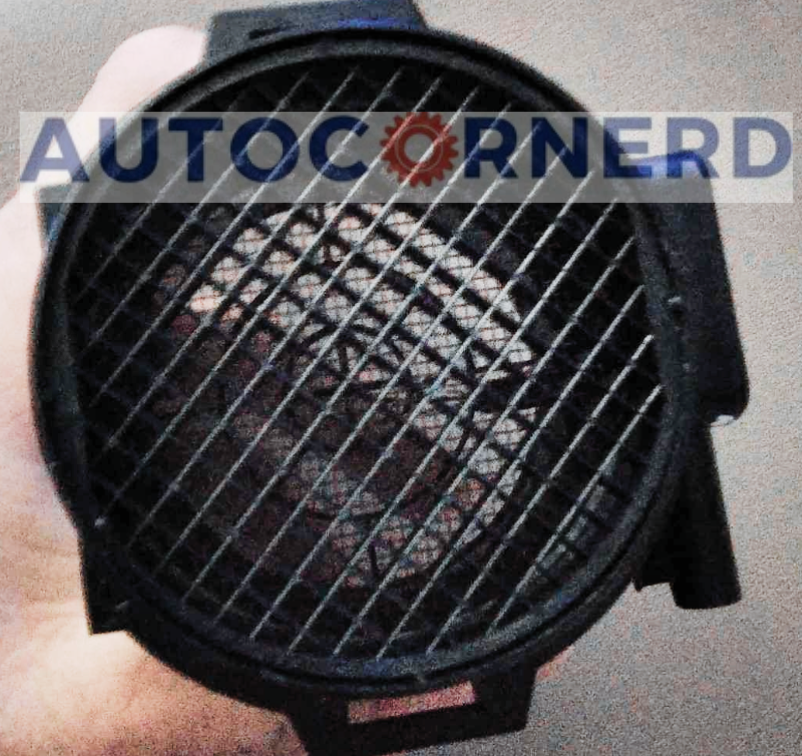
The MAF sensor is a key part under the hood. It measures the airflow entering the engine. Then, it helps mix the right amount of fuel so the engine can burn it.
You’ll find the MAF sensor between the air filter and throttle body. It uses a heated wire to figure out how much air passes by.
Over time, dirt and gunk can build up on the MAF sensor. Dust, dirt, and oil bits from the air stick to it. This stuff messes with the sensor’s accuracy.
When the MAF sensor fails, your vehicle may lack responsiveness when accelerating. This happens most when you step on the gas. More air flows over the faulty sensor then.
Pressing the gas pedal opens the throttle body more. This allows more air in. The bad MAF sensor readings throw off the fuel mixture. This makes the engine misfire and stumble when you accelerate.
I have also created a video on the symptoms of a bad MAF sensor. Make sure to check that out:
How to test?
If you want to test your MAF sensor, you can check the voltage it produces. When you press the gas pedal, more air flows through the sensor, which makes the voltage go up. When the car is not moving much, the voltage should be less than 1.0V. But when you speed up, the voltage from the MAF sensor goes up to around 1.7V.
If you notice the voltage from the MAF sensor is fluctuating, you can try cleaning the heated element with a special cleaner. Just make sure you don’t touch the wire! Let it dry completely before putting the sensor back in place.
If you need more help, you can watch a short video on YouTube that explains how to clean the MAF sensor.
5. Dirty Throttle Body Restricting Airflow
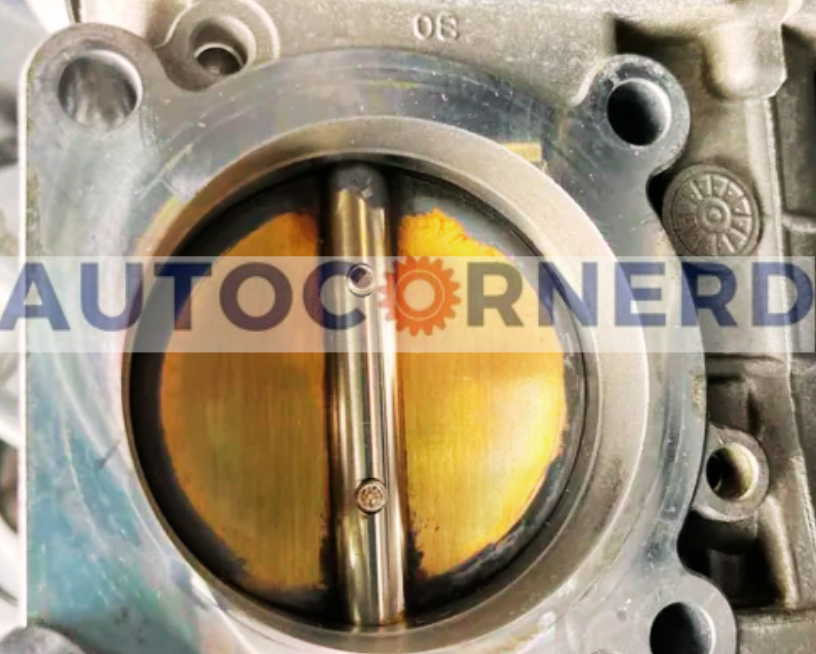
The throttle body is like a doorway that controls how much air enters the engine. With time, gunk like dirt, grime, and carbon can clog up this doorway, making it narrower.
Over months and years, the inside walls of the throttle body can get coated in sticky gunk – dirt, oily grime, and carbon buildup. This gunk sticks to the walls and makes it harder for the butterfly valve inside to open and close smoothly.
When the throttle body gets gummed up, it starts choking the engine’s air supply. Less and less air can squeeze through the narrow opening. This air starvation causes problems when you hit the gas pedal.
The engine needs more air when you step on the gas to mix properly with fuel for clean burning. But if gunk is blocking the throttle body gateway, not enough air gets in. The air-fuel ratio gets thrown off balance, and the engine sputters.
So as a result, you might experience hesitation or stalling when you try to accelerate. The engine struggles without its full air supply to run smooth and responsive.
How to fix?
To fix this issue, you can follow some steps:
- Take a look at the throttle body and check for any physical damage, like cracks or leaks. These issues can affect how it works.
- Examine the throttle plate inside the throttle body for excessive carbon buildup. This buildup can make the throttle plate stick and not move properly, causing problems.
- To clean the throttle body, you can use a throttle body cleaner and a soft brush or rag. Gently clean inside the throttle body to remove any dirt or carbon buildup.
6. Bad Crankshaft Position Sensor Causing Improper Spark Timing
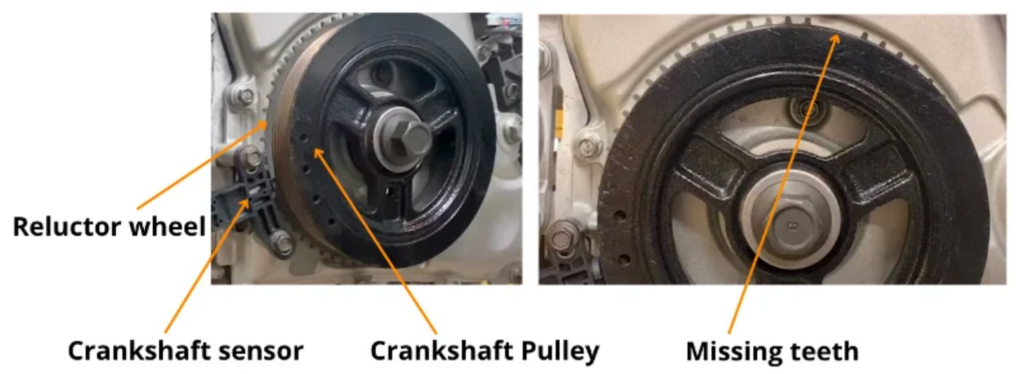
The crankshaft position sensor is like a watchful eye, monitoring the position and speed of the crankshaft at all times. It beams critical timing information to the engine control unit (ECU) so fuel and spark can dance in perfect sync.
When this sensor malfunctions, the vital data it sends gets distorted. The ECU gets confused about the proper spark timing, throwing the combustion timing off-kilter. Fuel doesn’t ignite as it should when accelerating. The engine stutters and jerks, robbed of power.
How does it fail?
The CKP sensor can fail due to mechanical wear and tear, damage to wiring, issues with sensor connectors, or failure of the sensor itself.
How to test?
To diagnose, check if the CKP sensor connector is loose or corroded. Look for damage to sensor wiring.
Use a multimeter to check that the sensor is providing a clean signal within the specified range. Monitor the sensor with an oscilloscope to see if the signal is steady or intermittent.
Watch the below YouTube video from 4:00.
If faulty, the CKP sensor needs to be replaced and properly synced to the engine crankshaft. To learn more, you can read my guide on car not starting after changing crankshaft position sensor.
7. Clogged Fuel Injector Restricting Fuel Flow During Acceleration Demands
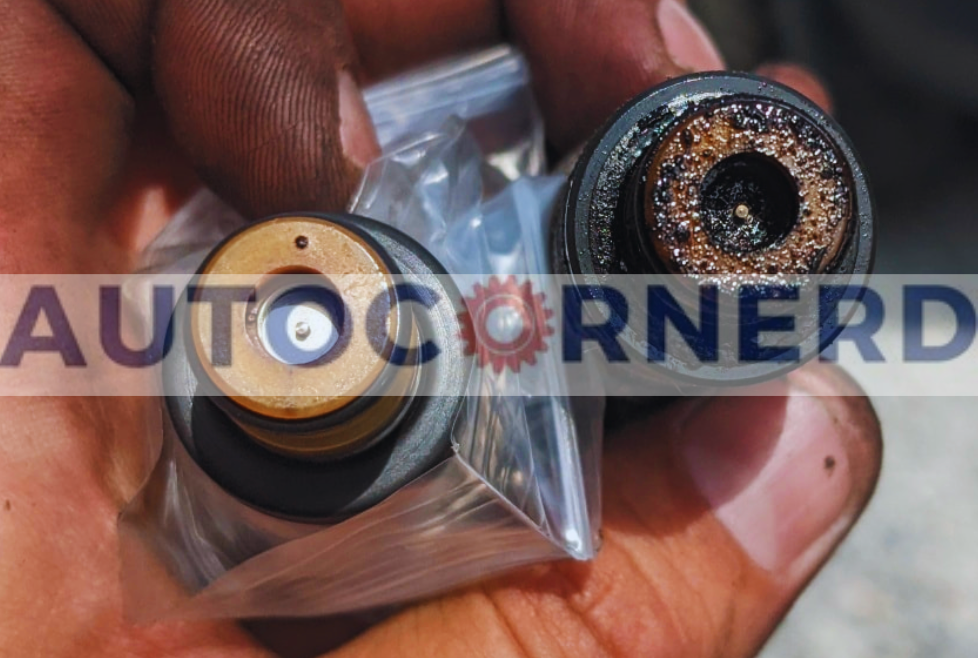
Fuel injectors are the small nozzles that spray fuel into your car’s engine. Their crucial job is to precisely deliver the right amount of fuel at just the right time.
But clogged injectors can’t properly spray the fuel, starving the engine. Without its full dose of fuel, the engine struggles for power. Acceleration turns rough and sputtery as the engine revs higher trying to compensate.
You’ll likely notice the hesitation and lack of smooth acceleration as you step on the gas. The engine has to work overtime, revving harder to get the oomph it needs from less fuel.
Why does it happen?
Clogged fuel injectors happen when carbon deposits or dirt build up around the nozzle. Another reason could be a faulty magnetic coil inside the injector.
You can check for damage by looking at the two terminals of the injector. These are the ends of the magnetic coil that carry electricity.

You should also check the o-ring of the fuel injectors. It is a small ring that prevents fuel from leaking. If it’s damaged, you’ll need to replace it. You can push the o-ring with your hand until it fits securely.
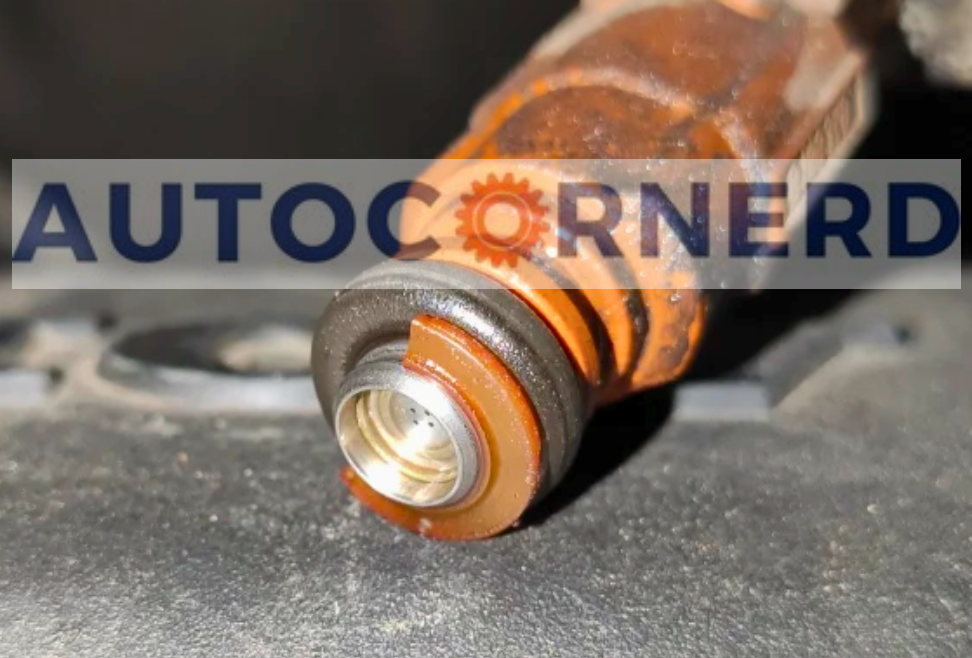
How to test?
To test if a fuel injector is bad, you can use a multimeter. Connect the probes to the terminals of the injector and set the multimeter to the right Ohms value (usually around 30 Ohms).
If the resistance shows “infinite,” it means the coil is open. If it shows “OL” or very low resistance, it means the coil of fuel injector has short-circuited. The right resistance means the coil is okay.
If you want a visual guide on how to test fuel injectors, check out a video starting from 2:40.
Another test is to listen for a clicking noise. Use a long screwdriver near the injector and turn the key to prime the fuel pump. Then connect a 9V or 12V battery to each injector and listen for a ticking noise. That’s the sound of the injector opening and closing.
You should also check if the fuel injector is spraying fuel in the right direction without any leaks. If it’s leaking, you’ll need a new one. To learn more about fuel injector tests, you can read my guide on car not starting after replacing fuel injectors.
Apart from the above experiments, check these things on the fuel injector:
- Look for burrs on the injector inlet
- Check nozzle holes for hole erosion or plugging
- Inspect the end of the nozzle for burrs or rough machine marks
- Look for cracks at the nozzle end
8. Bad Fuel Pump Decreasing Fuel Pressure for Smooth Acceleration
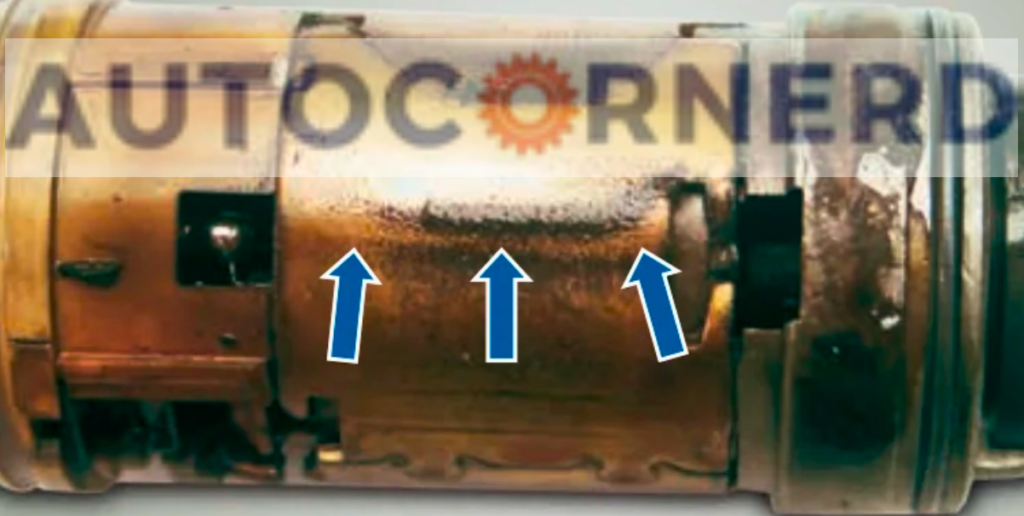
The fuel pump plays a vital role when you press the gas pedal. Your car needs more fuel to meet the increased power demand. But a faulty fuel pump can struggle to deliver.
Due to its reduced capacity, a bad fuel pump may fail to supply enough fuel when you step on the gas. This leaves the engine with a lean fuel mixture – an imbalance between fuel and air. The inadequate fuel supply makes the engine jerk and falter. Its performance takes a hit.
Fuel pressure is another critical factor impacted by a failing pump. The fuel pump has to maintain a specific pressure in the fuel system. If the pump is malfunctioning, it can’t preserve the needed pressure.
This pressure drop when accelerating starves the engine of required fuel for ideal combustion. So the engine hesitates when you need more power.
Why does it happen?
The fuel pump relies on an electrical circuit to power its operation. Any disruption or malfunction in this circuit, such as loose connections, faulty wiring, or a worn-out relay, can hinder the pump’s performance.
Furthermore, fuel contamination, caused by impurities or debris in the gas tank, can clog the fuel pump’s filter or cause damage to its delicate parts. This can hinder the pump’s ability to supply fuel efficiently.
Fuel pump can also damage due to excessive heat. Fuel pump is completely immersed in the fuel tank, and the fuel is also responsible for the lubrication and cooling of the fuel pump during operation.
If you frequently drive with very little fuel (less than 1/4th of tank capacity), your fuel pump will run dry, which will damage the internal components of the fuel pump.
To learn more, you can read my guide on problems after changing fuel pump.
How to diagnose and fix?
A fuel pressure test helps determine if the fuel pump is delivering fuel at the appropriate pressure during idle and acceleration. If the pressure is insufficient during acceleration, it’s a strong indicator of a bad fuel pump.
Clogged or dirty fuel filter can restrict fuel flow and put additional strain on the fuel pump. You should inspect and replace fuel filter if necessary to ensure smooth fuel delivery.
9. Vacuum Leaks Causing Lean Air-Fuel Mixture
The engine needs the perfect mix of air and fuel to run smoothly. A vacuum leak happens when extra air sneaks into the intake without the MAF sensor measuring it. This throws off the delicate balance and causes problems.
But how does a vacuum form inside the engine in the first place? Here’s a quick anatomy lesson.
When the piston moves down during the intake stroke, it makes more space for the air-fuel mixture to enter. This creates a partial vacuum – like a suction force.
The intake valve opens and the vacuum sucks the mixture from the manifold into the cylinder. This vacuum is vital for good combustion.
When you step on the gas to accelerate, the throttle plate opens more to allow in extra air. So the vacuum gets weaker as you press down.
At idle, the vacuum is strongest since the throttle plate closes to limit airflow.
With the strongest vacuum at idle, any leak means unmeasured air can sneak in. And this fouls up the air-fuel ratio, causing your engine to stall or turn off.
What causes these pesky vacuum leaks?
- Cracked or Leaking Intake Manifold: This manifold evenly distributes air to the cylinders. Cracks or leaks let in extra air, triggering a leak. Inspecting for damage and replacing the manifold prevents problems.
- Worn or Damaged Intake Manifold Gaskets: These gaskets seal the connection between the manifold and engine block. Over time, wear, cracks or damage can allow air to escape or enter improperly. This causes a vacuum leak and related issues.
- Faulty Vacuum Hoses: These hoses route air between engine parts. Cracks, leaks or disconnected hoses introduce unmeasured air and vacuum leaks.
How can you spot a vacuum leak?
While the engine is running, listen closely for any hissing sounds. A vacuum leak often makes a distinct high-pitched hissing noise. If you hear it, try to locate the source, as it can help you find the problem area.
Professionals sometimes use smoke machines to find vacuum leaks. These machines fill the intake system with smoke, making it easier to see where the smoke escapes from. While this method might not be readily available for most people, it’s highly effective in finding even the trickiest leaks.
You can also use carb cleaner to detect vacuum leaks.
10. Blocked Catalytic Converter Restricts Exhaust Gas Flow

Catalytic converters are helpful devices in your car’s exhaust system. They help turn the harmful gases from the engine into less harmful gases before releasing them into the air.
How do they do this? Through a chemical reaction that breaks down pollutants like carbon monoxide and nitrogen oxides.
The catalytic converter has precious metals inside, like platinum and palladium. These metals act as catalysts to get the chemical reaction going.
The metals are coated onto a ceramic honeycomb structure inside the converter. This honeycomb lets the gases flow through easily and gives lots of surface area for the reaction.
But sometimes, problems can happen with the converter. If it gets clogged with unburnt fuel, the gases can’t flow through well. Or if the ceramic honeycomb gets damaged, it can’t work right.
When this happens, the exhaust gases don’t escape like they should before the next batch of air and fuel enters the engine. So the engine can’t get rid of the burnt gases effectively. This leads to less power, slower acceleration, and more fuel use.
Basically, the blocked catalytic converter causes backpressure. The exhaust gases can’t exit the engine cylinder after combustion. I’ve explained this issue in more detail in my guide on straight pipe exhausts.
How can you know if your catalytic converter is causing hesitation?
You can do a simple test with a laser thermometer. First, start your car and let it run a few minutes. Pop the hood open. Point the thermometer at where the exhaust enters the converter.
Then, go under the car. Aim at where the gases exit the converter. If there’s a big temperature difference, it means the gases are stuck inside and not escaping right.
Another check is to tap the converter gently with a hammer. If you hear rattling, that could signal an issue. You can also remove the converter and look for fallen ceramic pieces inside.
If you think your converter is faulty, use an OBD2 reader. It can check for error codes like P0420, which points to converter problems.
11. Bad Engine Mounts Impairing Smooth transmission of Torque to Drivetrain
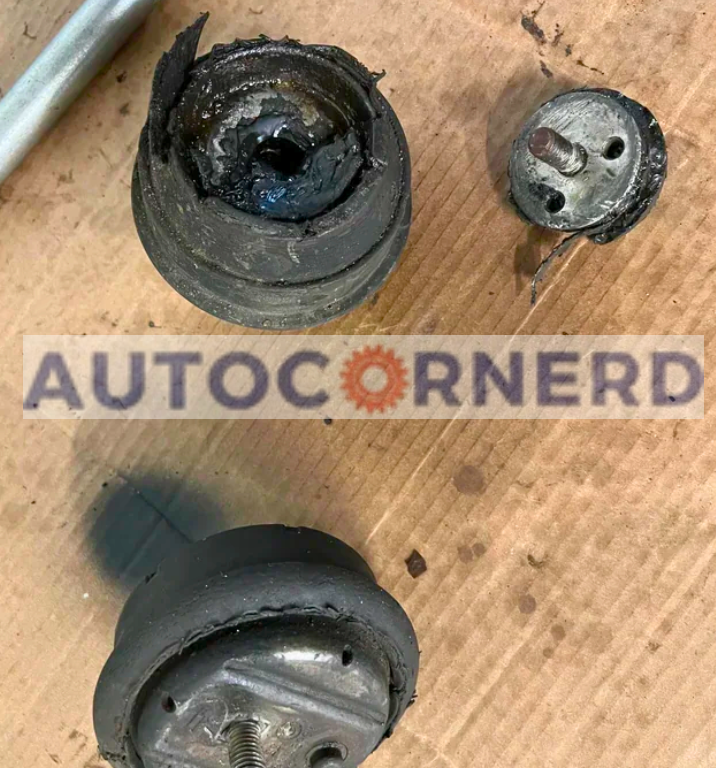
Engine mounts are also called motor mounts. Their main role is securing the engine to the car’s frame or chassis.
These parts are usually made from rubber or a combo of rubber plus metal. The key job for engine mounts is absorbing vibrations from the engine. This prevents too much movement.
When engine mounts get worn out or damaged, jerk and vibration can happen during acceleration. Here’s why it occurs:
- Engine movement: As you accelerate, the engine makes torque and wants to move. The mounts keep it still. But when the mounts go bad, they lose their ability to stabilize the engine well. This lets the engine move more than it should.
- Vibrations messing with sensors: Bad mounts can lead to more vibrations and shaking. These vibrations can impact various sensors in your car. Sensors that measure air and fuel intake are affected. When disturbed, these sensors may send incorrect signals to the engine control unit (ECU). This causes the engine to sputter.
How to test?
To check if your engine mounts cause sputtering issues, do a simple test. With the engine running and parking brake on, have someone watch the engine as you accelerate rapidly. If the engine shows excessive movement or shifting, the mounts are likely worn. They need replacement.
12. Slipping Transmission Failing to Transfer Power Smoothly to Wheels
The engine RPMs are increasing but the car hiccups and struggles to accelerate. What’s happening under the hood?
Let’s break it down in simple terms.
The automatic transmission is a complex system with some key parts:
- Torque converter: This device connects the engine power to the wheels. It uses fluid to make the connection smooth.
- Control Valves: They manage the transmission fluid flow to control the gear shifts. The valves respond to how fast you push the pedal.
- Valve body: It directs the transmission fluid to shift gears at the right times. Tiny passages move the fluid around like a control board.
- Transmission fluid: Like engine oil, this fluid keeps things lubricated and working properly.
- Clutch Bands: They handle engaging and disengaging the gears. The valves provide hydraulic pressure to control the bands.
If the transmission is slipping, those clutch bands are likely the culprit. They are worn out and can’t grip the gears firmly anymore.
The result is the engine revs faster but the gears start slipping. Acceleration becomes weak and sputtery.
You can watch the following Youtube video to understand how automatic transmission starts slipping:
So, how can you spot a slipping transmission?
One common reason is low or bad transmission fluid. Just like with engine oil, you can check the transmission fluid level using a dipstick. Park your car on level ground, warm up the engine, and follow these steps:
- With the engine running, press the brake pedal and shift through each gear, holding for about 5 seconds in each position. Then, put the gear lever in PARK.
- Turn off the engine.
- Remove the dipstick, wipe it clean, and insert it back all the way.
- Take out the dipstick again and check the fluid level.
If the fluid level is below the designated lower mark, that means your transmission oil is running low. If you notice a dark color in the transmission fluid, it’s time to flush the transmission to keep it working smoothly.
Note: Keep in mind that if your car has been driven in various conditions, like fast highways, city streets, or towing a trailer, it’s important to let the transmission fluid cool down to get an accurate reading.
Now, it’s not just the fluid that can cause slipping. Worn-out clutches and bands can also be to blame.
When clutch bands get worn out, their grip weakens, resulting in the clutch slipping and the gears not engaging properly.
Next, you should check the control solenoids in the valve body. A faulty solenoid valve sticks open or closed so the fluid can’t apply the proper pressure to shift gears. The result is the same transmission slippage and hesitation when accelerating.
You can watch the below youtube video to test the solenoids of an automatic transmission system:
Final Thoughts
In summary, a car idles well but coughs when pressing the gas pedal can be frustrating to diagnose. Key culprits often include fouled spark plugs, faulty oxygen sensors, clogged fuel injectors, slipping transmission, or vacuum leaks.
Thorough visual inspection and testing components with a multimeter can help isolate the root cause. Replacing worn parts, cleaning sensors, checking wiring, and refilling fluids may resolve these acceleration issues.
Proper maintenance and tuning up ignition, fuel, and transmission systems reduces the likelihood of sputtering. Addressing minor problems quickly prevents bigger issues down the road.
Some First Hand Experiences Shared By Users In Different Communities
Our team conducted research across various online communities, forums, and subreddits to gather user comments and opinions on “car idles smoothly but sputters during acceleration”.
User 1 says:
My 2016 Ford Fusion had a similar problem. It idled okay but would hesitate and sputter when I tried to accelerate. After some research, I learned that the spark plugs could be the culprit. I checked them and found they were worn out. I replaced the spark plugs and ignition coils, and the car’s acceleration improved quite a lot.
User 2 says:
I drive a 2013 Chevrolet Cruze. It started to hesitate during acceleration, though idling was fine. The check engine light came on, so I used a code reader and found a P0300 code, indicating a misfire. I replaced the spark plugs and ignition coils, but the issue was actually a clogged fuel injector. After cleaning the fuel injectors, the car accelerated smoothly again.
User 3 says:
I own a 2015 Nissan Altima. It was fine at idle but stuttered when accelerating. I suspected a fuel delivery issue. A mechanic friend suggested checking the fuel pump and filter. Turns out, the fuel filter was almost completely blocked.
User 4 says:
I had a 2012 Volkswagen Jetta that ran smoothly at idle but sputtered on acceleration. After some troubleshooting, I discovered that the oxygen sensor was malfunctioning, sending incorrect data to the ECU and causing the fuel mixture to be off. Replacing the oxygen sensor fixed the issue, and the Jetta’s performance returned to normal.
User 5 says:
I drive a 2019 Kia Sorento which started to struggle on acceleration. The car would idle perfectly, but as soon as I pressed the gas pedal, it would hesitate and jerk. A mechanic checked and found that the catalytic converter was partially blocked. This was affecting the exhaust flow. Mechanic replaced the catalytic converter and the Sorento’s acceleration became smooth again.
